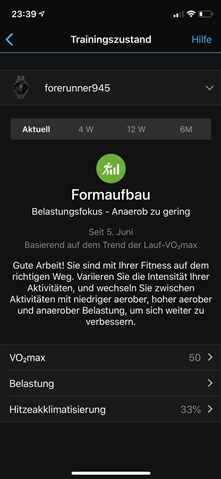So we’ve had a fairly mild spring here and prior to today had only 2 runs with my 945 that were over 71f and the heat acclimation was at 17%.
Today I ran an HM and the temp at start time was probably around 68f, although the temp shown for the run by Connect is 63f, but quickly rose into the mid-70’s. Afterward my heat acclimation remained at 17%.
This seems to be a flaw with the way this feature works, or maybe my understanding of it. Many runs can have a rise from below the threshold temp to above it, and also there’s a good chance that the temp that Connect receives might be accurate. My watch had been been connected to my phone the entire time so it’s not a matter of it using outdated info.
from Firstbeat might have some insight?



